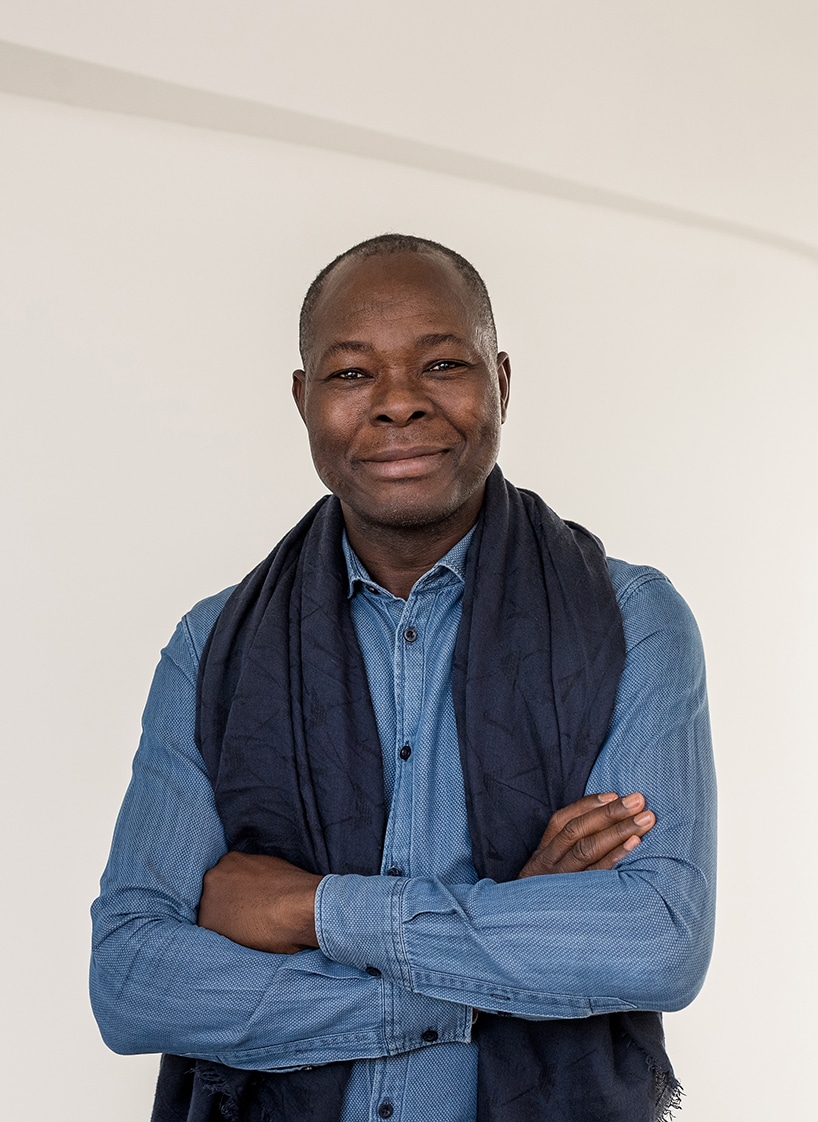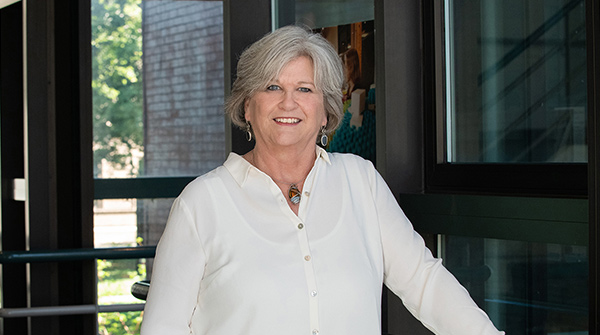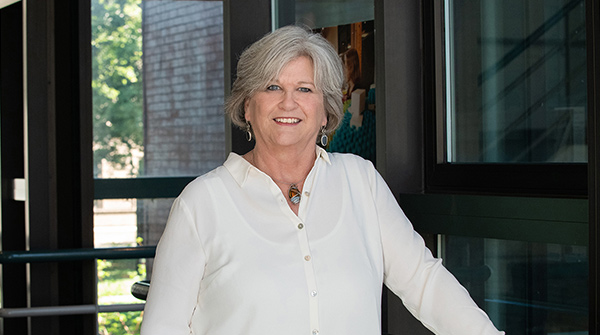Posts
University of Virginia

Prof. Francis Kere; Professur ‘Architectural Design and Participation’, Fakultaet fuer Architektur an der Technischen Universitaet Muenchen (TUM); fotografiert am Lehrstuhal am 18.02.2019; Foto: © Astrid Eckert / TU Muenchen;
Verwendung frei fuer die Berichterstattung ueber die TU Muenchen unter Nennung des Copyrights
Francis Kéré, 2021 Thomas Jefferson Foundation Medalist in Architecture
Burkinabé architect Francis Kéré, founder of the Berlin-based firm Kéré Architecture, is the 2021 recipient of the Thomas Jefferson Foundation Medal in Architecture.
Kéré received his architectural degree from the Technische Universität in Berlin in 2004, having originally been trained as a carpenter both in his native country of Burkina Faso and in Germany. While still an architecture student he set up the association Schulbausteine für Gando e.V, later named Kéré Foundation e.V., which loosely translates to “School Building Blocks for Gando” to fund the construction of a primary school for his hometown.
He went on to complete his studies and build the Gando Primary School as his diploma project in 2004, the same year he also founded his own architectural firm Kéré Architecture. His first-ever building was awarded the prestigious Aga Khan Award for Architecture, recognized not only for its innovative construction techniques and expressive care in craftsmanship, but also for being built cooperatively by the Gando community.
Over the course of nearly two decades, Kéré has gone on to become one of the world’s most distinguished contemporary architects, celebrated for his pioneering communal approach to design and his commitment to sustainable materials, as well as modes of construction. Inspired by a curiosity for the particularities of any given locality and its social tapestry, he and his diverse team at Kéré Architecture have completed renowned projects across four continents. Most prominently these include his design for the Burkina Faso National Assembly in Ouagadougou; the Léo Surgical Clinic & Health Centre (2014) in Léo, Burkina Faso; IT University in Burkina Faso; the Lycée Schorge Secondary School (2016) in Koudougou, Burkina Faso; the Serpentine Pavilion (2017) in London; and Xylem (2019), a gathering pavilion for the Tippet Rise Art Center in Fishtail, Montana.
For its remarkable success in combining socially engaged and ecologically resilient design Kéré Architecture is the recipient of numerous awards, including the Global Award for Sustainable Architecture (2009), the Marcus Prize (2011), the Global LafargeHolcim Gold (2012), the Schelling Architecture Foundation Award (2014) among others. In 2017, Kéré received two prominent honors, the Prince Claus Laureate Award and the Arnold W. Brunner Memorial Prize in Architecture from the American Academy of Arts & Letters, for which he was praised for being “an alchemist working with local materials and technology to design buildings of meaning and beauty.”
The medal is typically presented in observance of Jefferson’s birthday, April 13, during celebrations including a formal dinner at Monticello, a medal presentation at UVA and public talks by the medalists. However, due to the ongoing COVID-19 pandemic, the Architecture medal will be given during a virtual event. In In recognition of this distinguished honor, the UVA School of Architecture will host this virtual public talk by Kéré on Monday, April 12 at 5 p.m. (EDT), hosted on Zoom.
The boundary-pushing architectural practice championed by Kéré has attracted the attention of exhibition makers and curators, allowing him to oscillate between the realms of architecture and art. Commissions have included the Serpentine Pavilion (2017) – as the first architect of African descent to receive it; a visitors pavilion for the Coachella Valley Music and Arts Festival (2018); showcases at the Venice Biennale of Architecture (2016 & 2018); and various solo exhibitions, including at the Museo ICO in Madrid (2018), the Architekturmuseum in Munich and the Philadelphia Museum of Art (both in 2016). His work has been selected for group exhibitions such as: “AFRICA: Architecture, Culture and Identity,” at the Louisiana Museum of Modern Art, Humlebæk (2015); “Small Scale, Big Change: New Architectures of Social Engagement,” at the Museum of Modern Art, New York (2010); and “Sensing Spaces,” at the Royal Academy, London (2014).
A current project, the Benin National Assembly in Porto-Novo, is designed to embody the identity of the people it serves. Kéré said, “This project gives shape to our ideas about community gathering, the importance of indigenous forms of governance and what contemporary African architecture can be on a national scale.” The government building includes an adjacent park that can be used by city residents as a central recreation space, creating a sense of openness and transparency, while expressing the democratic values of the people of Benin.
This project evokes the values inherent in the inspirational work of Kéré and his expertise in tackling complexity with understated elegance across scales and contexts. As School of Architecture Dean Ila Berman said, “Beginning with Francis Kéré’s original work in Gando and throughout his acclaimed career, he has not only taught the world that architecture and education are for everyone, but also has exemplified how architecture can build capacity in communities, foster environmental and cultural resilience, and inspire creativity while immeasurably serving the public good.”
On the anniversary of Thomas Jefferson’s birthday, April 13 (known locally as Founder’s Day), the University of Virginia and the Thomas Jefferson Foundation at Monticello join together to present the Thomas Jefferson Foundation Medals to recognize achievements of those who embrace endeavors in which Jefferson, the author of the Declaration of Independence and third U.S. president, excelled and held in high regard. These medals are the highest external honors bestowed by the University of Virginia, which grants no honorary degrees.
photo credit: Astrid Eckert
Pennsylvania State University
Architecture professor’s firm named Emerging Voices competition winner
UNIVERSITY PARK, Pa. — Low Design Office (LOWDO), an architecture and integrated design firm co-founded by DK Osseo-Asare, assistant professor of architecture and engineering design at Penn State, has been named a winner of the Architectural League of New York’s Emerging Voices 21 competition.
Established in 1982, the Emerging Voices award spotlights individuals and firms based in the United States, Canada and Mexico with distinct design voices and the potential to influence the disciplines of architecture, landscape design and urbanism.
Based in Austin, Texas, and Tema, Ghana, LOWDO explores the links between sustainability, technology and geopolitics. The firm’s projects search to find optimal balance between design and resource consumption — to achieve the “most” with the “least.”
LOWDO has earned numerous international accolades in recent years and was named one of the 50 best emerging architecture practices in the world Domus magazine in 2020. The firm was featured in Architect magazine’s “Next Progressives” list in 2019, was a finalist for the Museum of Modern Art (MoMA) and MoMA PS1 Young Architects Program that same year and was recognized as an emerging architecture firm in the December 2017/January 2018 issues of Architectural Review.
Osseo-Asare and Ryan Bollom, LOWDO co-founders and principals, started the practice in 2006 while they were students at the Harvard Graduate School of Design. The firm was created around the idea that transformative innovation in creative fields “most often originates when the creator must overcome limited means and resources to provide meaning in their work.”
LOWDO will be featured in the Emerging Voices lecture series at 6 p.m. on March 18. More information about the event, which is free and open to the public but requires advanced registration, can be found on the Architecture League’s website.
Kennesaw State University
Liz Martin-Malikian named AIAS Educator of the Year 2020
Kennesaw State University professor Liz Martin-Malikian was recently named Educator of the Year at the American Institute of Architecture Students (AIAS) Honor Awards.
Martin-Malikian, thesis coordinator and professor of architecture in KSU’s College of Architecture and Construction Management, was recognized by AIAS for her outstanding contribution to the education of architecture students, the impact she has made on the education of architecture students and for championing the virtues of excellence in architecture and the environment to the general public. The award also honors educators who align with the AIAS mission to “advance leadership, design and service among architecture students.”
“This award confirms what we already knew about Liz – that she is a first-rate educator who embodies KSU’s value of putting students first,” said Andrew Payne, dean of the College of Architecture and Construction Management. “We are privileged to have her among the faculty in the Department of Architecture, and I’m sure many more accolades will come her way in the future.”
Martin-Malikian has taught at the University since 2006 and has since become the thesis coordinator of the architecture department’s advanced core sequence, one of the few programs nationwide that requires students to pursue thesis projects while earning an architecture degree. Aside from her involvement with thesis sequences, Martin-Malikian teaches courses on environmental technology, materials and methods, third-year studios and urban design. She taught in Auburn University’s School of Architecture, Planning and Landscape Architecture as the Paul Rudolph Visiting Professor of Practice prior to arriving at Kennesaw State.
See Kennesaw State University News Link HERE
Auburn University

Associate Professor Margaret Fletcher Named Ann and Batey Gresham Chair of Architecture
Associate Professor and Associate Program Chair of Architecture, Margaret Fletcher has been named the Ann and Batey Gresham Professor of Architecture. Established in 1999 by Nashville architect Batey Gresham (BArch ’57) and his wife Ann, this endowed professorship was designed to provide financial support to outstanding faculty who exhibit a strong commitment to quality instruction, research and service, and who thus “strengthen and enhance the architecture program.”
An innovative educator who consistently brings emerging technologies and methods to her teaching, Fletcher is a practicing architect and artist in addition to her role as faculty at Auburn’s School of Architecture, Planning and Landscape Architecture (APLA). Fletcher is also the author of multiple volumes illustrating her expertise and innovations in graphic communication and representation; in 2016 Fletcher published Constructing the Persuasive Portfolio; The Only Primer You’ll Ever Need, followed by Visual Communication for Architects and Designers: Constructing the Persuasive Presentation in September 2020. Most recently, Architectural Styles: A Visual Guide was released in November 2020.
University of Nebraska-Lincoln
UNL Architecture Students Win Grand Prize In International Competition
Former master of architecture students Hannah Christy and Craig Findlay were named the student grand prize winners of Architizer’s prestigious 2020 One Drawing Challenge for their project titled “Concrete Atla(nti)s.” Out of 404 total international submissions, spring graduates Christy and Findlay were selected by a jury as the student competition winners.
“We feel extremely grateful Architizer has recognized our work in the 2020 One Drawing Challenge. Working on this project with my studio partner Craig Findlay, and our professor Brian Kelly, was an absolute joy,” said Christy. “Brian constantly encouraged us as a team to push ourselves by challenging countless conceptual avenues and unconventional representation techniques. Overall, it was such a positive experience, and we are beyond thankful for this outcome.”
Their entry originated from Associate Professor Brian M. Kelly’s Studio Copy Right design research studio during the fall of 2019. Other College of Architecture finalists include Audrey Lanik and Di Zai Awng for their project “Elevated” and Ian Jones for his project “Tower of Tangier’s.” All of these submissions were supervised by Kelly.
“Mentoring Hannah and Craig through this project was a very rewarding experience for me, and this recognition is a testament to their talent and hard work,” said Kelly.
Christy and Findlay offer insight to their project’s meaning and inspiration.
“Representing our capacity to maintain archaic infrastructure in an overwhelming environment overflowing with waste, occupied by a population complacent to unrest, this drawing is as complex as the topics it alludes to. It is set in one of the 72 decommissioned Atlas-F missile silos scattered across the United States. This drawing critiques the haphazard mismanagement of reusable commodities of varying scales ranging from abandoned infrastructure to recyclable materials. Through the convention of a section, this drawing shows the activities in the depth of the repurposed missile silo.”
This is the second year in a row Kelly’s architecture students have represented the college as finalists in this competition. Nate Gradoville competed last year with his project titled “Seed Lottery.”
“This prestigious award is indicative of the strength and passion possessed by former graduate architecture students Hannah Christy and Craig Findlay and Professor Kelly’s continued dedication to mentorship,” said Architecture Program Director David Karle.
University of Nebraska-Lincoln
Professor Jeffrey L. Day, FAIA and the fall 2019 FACT studio are among the honorees at this year’s AIA Central States Region Design Excellence Awards Celebration earning a Merit Award for their project “Sheridan County Fairgrounds 4H Campus” held September 25 in Des Moines, Iowa.
Their submission was an outgrowth of FACT’s spring 2018 project with the Sandhills Institute in nearby Rushville, Nebraska. The studio’s project partner, the Sheridan County 4H Foundation, sought a master plan with new and repurposed buildings to replace disconnected existing structures in disrepair. The goal for phase one, completed in 2020, was to produce a detailed design proposal to assist the 4H Foundation in refining the project scope, forming a clear vision for the fairgrounds and producing materials to support fundraising and development.
Although the 2019 studio has ended, FACT interns are working with Actual Architecture Co. to advance the project and assist the 4H Foundation in realizing the project.
“We look forward to continuing to develop this project and increasing its impact,” said Day.
Representing a cross-disciplinary collaboration of master of architecture students and undergraduates from architecture, interior design and landscape architecture, the team comprised of Ashley Glesinger, Paige Haskett, Jerry Philbin and Andres Villegas.
As Day explains, so often culture and the built environment are ignored and overlooked in rural communities. Projects like the 4H Foundation collaboration give students an opportunity to invert commonly held misconceptions that the urban setting is the center of culture while rural areas are simply supporting hinterland.
Day, program administrators and the students are thrilled with the recognition.
“The AIA Central States Region award affirms our goals for the FACT studio, where students work in cross-disciplinary teams to co-design a project with faculty,” said Day. “The award demonstrates that our collaborative approach yields design proposals that hold their own among the best architects in the region.” “It’s so exciting to see the 4H Foundation project get recognition outside of the college,” said master of architecture student Ashley Glesinger. “The award is testament to the relevancy and importance of the issues addressed by the studio and our Sheridan County collaborators.”
“I would like to offer my congratulations to Professor Day and the FACT students,” said Architecture Program Director David Karle. “The award-winning design/build studios in the College of Architecture are more than just projects. They are tools for our students to collaboratively engage communities and partners to realize a spatial design.”
The AIA Central States Region Design Excellence Awards Celebration is an annual event that recognizes outstanding regional architecture from Iowa, Kansas, Missouri, Nebraska and Oklahoma. The AIA Design Excellence Awards have been developed to encourage and recognize excellence in architecture, to elevate public awareness and to recognize the architects, consultants, contractors and owners whose efforts enhance the built environment.
Entries were judged based on a variety of features, including unique design, originality, extended use attributes, sustainability and use of environmental surroundings.
Pennsylvania State University
UNIVERSITY PARK, Pa. — Penn State Stuckeman School architecture alumna Stella Murray was recently named a recipient of the Jonathan Speirs Scholarship which supports architecture students who wish to enter the architectural lighting design profession.
A Schreyer Honors College scholar with interdisciplinary honors in architecture and architectural engineering, Murray graduated with her research-based master’s degree in architecture in May while simultaneously earning undergraduate degrees in architecture (B.Arch.) and Italian.
According to John Roake, chairman of the Jonathan Speirs Scholarship Fund (JSSF) Board of Trustees, “Both [recipients] made outstanding submissions which concisely and clearly expressed their phenomenal passion and drive to use light as a major part of their ongoing studies, as well as their intended future careers.”
“It is difficult to fully express in words my gratitude for having been selected as a recipient of the Jonathan Speirs Scholarship Fund,” said Murray. “The scholarship grants me a host of opportunities; however, it is the acknowledgement of my potential as a lighting designer that means the most to me.”
The Jonathan Speirs Scholarship Fund is a UK-registered charity that has been set up at the behest of the late Jonathan Speirs to allow “a student of architecture to investigate the study of architectural lighting design.”
Speirs was recognized as one of the world’s leading architectural lighting designers up until his death in 2012 at age 54 due to cancer.
Murray was one of two recipients of the 2019-20 Speirs scholarship.
In addition to the Speirs award, Murray earned a 2020 Distinguished Master’s Thesis Award from Penn State for her thesis titled “Bringing to Light the Qur’an: The Theophany of Allah By Means of Lighting Design in the Süleymaniye Mosque.”
She was also recently named the recipient of the Architectural Research Centers Consortium (ARCC) King Student Medal for Excellence in Architectural and Environmental Design Research. The award acknowledges students for their innovation, integrity and scholarship in architectural and/or environmental design research.
Murray has been working virtually as an intern with Horton Lees Brogden (HLB) Lighting Design this summer. HLB leadership has been so impressed with her work and passion that she was offered a full-time position at the firm as a design assistant. She will transition into her new role at HLB in October.
Murray is also currently studying for the WELL Accredited Professional (AP) exam, which she plans to take in September. Being a WELL AP “denotes expertise in the WELL Building Standard and a commitment to advancing human health and wellness in buildings and communities around the world.”
University of Nebraska-Lincoln
The College of Architecture is pleased to announce Dean Katherine S. Ankerson, FIIDA, was one of six International Interior Design Association (IIDA) members inducted into the prestigious IIDA College of Fellows for 2020.
Ankerson joins an elite peerage, an honor few can claim with less than 1% of IIDA members elevated to the College of Fellows, and of those fellows, only a select few are full-time educators.
According to IIDA, induction into the College of Fellows honors a member’s achievements and contributions to the profession and the association. It is the highest and most prestigious honor IIDA bestows. The College of Fellows is composed of members who have demonstrated outstanding and exemplary professionalism and leadership.
“The IIDA College of Fellows honors IIDA members who have demonstrated significant accomplishments within the association and their own design communities. This year’s inductees are thought leaders, inspiring educators and design innovators. We are pleased to be welcoming them for this term,” said College of Fellows Chair Guy Geier, FIIDA.
This fellowship adds to Ankerson’s long list of accolades and accomplishments as an educator and advocate for the design community. In addition to the IIDA fellowship, Ankerson was honored by the Interior Design Educators Council (IDEC) in 2017 as a fellow and has held numerous prestigious professional positions. She has served as a board member for design organizations such as the Council for Interior Design Accreditation (CIDA), the American Institute of Architects-Nebraska (AIA NE), the AIA NE Foundation, the Nuckolls Fund for Lighting Education and IDEC among other professional contributions.
In addition to IIDA, Ankerson is a member of the American Institute of Architects (AIA) and the Interior Design Educators Council (IDEC). She is also a licensed architect in Washington and Nebraska and holds a National Council of Architectural Registration Boards (NCARB) certificate.
“It is humbling to be named an IIDA fellow and listed among the ranks of professionals who I’ve always admired,” commented Dean Ankerson. “As with every honor there is opportunity, and I hope to learn from this esteemed peerage of designers and galvanize the next generation of designers to be leaders and innovators who will plan boldly, design fearlessly and realize their limitless potential for what is possible.”
ACSA Announces Recipients of 2020 Architectural Education Awards
2020 ACSA Architectural Education Awards
Faculty Recognized for Excellence in Architectural Education
Note: This press release is being re-released to accommodate an additional award: TAD Best Article for Volume II. Please see below for more detailed information about the award.
For Immediate Release:
Washington D.C., February 27, 2020 – The Association of Collegiate Schools of Architecture (ACSA) announces the recipients of the 2020 Architectural Education Awards which honors architectural educators for exemplary work in areas such as building design, community collaborations, scholarship, and service. The award-winning professors inspire and challenge students, contribute to the profession’s knowledge base, and extend their work beyond the borders of academia into practice and the public sector.
This year’s recipients are:
AIA/ACSA Topaz Medallion for Excellence in Architectural Education
Awarded to an individual who has had a significant impact on architectural education and the discipline and practice of architecture.
David Leatherbarrow, University of Pennsylvania
Distinguished Professor Award
To recognize individuals that have had a positive, stimulating, and nurturing influence upon students over an extended period of time and/or teaching which inspired a generation of students who themselves have contributed to the advancement of architecture.
Gail Dubrow, University of Minnesota
Karen Kensek, University Southern California
Stephen D. Luoni, University of Arkansas
Vikramaditya Prakash, University of Washington
Richard Sommer, University of Toronto
ACSA/AIAS New Faculty Teaching Award
To recognize demonstrated excellence in teaching performance during the formative years of an architectural teaching career.
Jacob Mans, University of Minnesota
Diversity Achievement Award
Recognizes the work of faculty, administrators, or students in creating effective methods and models to achieve greater diversity in curricula, school personnel, and student bodies, specifically to incorporate the participation and contributions of historically underrepresented groups or contexts.
_mpathic design: pedagogy, initiative, practice
Elgin Cleckley, University of Virginia
The Work: USC Architecture’s Diversity and Inclusion Plan
Amy Murphy & Lauren Matchison, University of Southern California
Creative Achievement Award
Recognizes a specific creative achievement in teaching, design, scholarship, research, or service that advances architectural education.
Iowa State University Computation + Construction Lab (CCL)
Shelby Doyle, Iowa State University
Fabricating Customization
Jeremy Ficca, Carnegie Mellon University
The Future of the Netsch Campus
Judith De Jong, University of Illinois at Chicago
Collaborative Practice Award
Established in 1997 by Thomas Dutton and Anthony Schuman to recognize ACSA’s commitment to community partnerships in which faculty students and neighborhood citizens are valued equally and that aim to address issues of social injustice through design.
Waipahu Transit-Oriented Development (TOD) Collaboration
Cathi Ho Schar & Waipahu TOD Collaboration Team, University of Hawaiʻi Community Design Center
Urban Acupuncture for Community Forge
Stefan Gruber, Carnegie Mellon University
Sustainability Laboratory and Urban Garden (SLUG)
Linda Samuels, Washington University in St. Louis & Christopher Trumble, University of Arizona
Faculty Design Award
Recognizes work that advances the reflective nature of practice and teaching by encouraging outstanding work in architecture and related environmental design fields as a critical endeavor.
City Thread
Molly Hunker & Gregory Corso, Syracuse University
Buoyant Ecologies Float Lab
Adam Marcus, Margaret Ikeda, & Evan Jones, California College of the Arts
Shaped Places of Carroll County New Hampshire
McLain Clutter & Cyrus Penarroyo, University of Michigan
Swissness Applied Exhibition
Nicole McIntosh & Jonathan Louie, Texas A&M University
Faculty Design Honorable Mentions:
Salvage Swings
Jessica Colangelo & Charles Sharpless, University of Arkansas
Close to the Edge: The Birth of Hip-Hop Architecture
Sekou Cooke, Syracuse University
Ashes & Ashes Cabin
Leslie Lok & Sasa Zivkovic, Cornell University
Design-Build Award
Honors the best practices in school-based design-build projects.
Groundwork
Adam Modesitt, Tulane University
Tarkeeb Gatehouse + Garden
Michael Hughes & William Sarnecky, American University of Sharjah
ASHED – The South Sioux City Community Orchard Facility
Jason Griffiths, University of Nebraska-Lincoln
AIA/ACSA Practice + Leadership Award
Recognizes “best practice” examples of highly effective teaching, scholarship, and outreach in the areas of professional practice and leadership.
UHCDC: Exploring Public Sector Practice
Cathi Ho Schar & University of Hawaiʻi Community Design Center, UH Manoa
Forensics Studio
Federico Garcia Lammers, South Dakota State University
AIA/ACSA Housing Design Education Award
Recognizes the importance of good education in housing design to produce architects ready for practice in a wide range of areas and able to be capable leaders and contributors to their communities.
Between Neighbors: Staging Domesticity in Multifamily Housing.
Katie MacDonald, University of Tennessee-Knoxville
New Domesticities New Collectivities
Jonathan Rule & Kathy Velikov, University of Michigan
Over Under In Between: Affordable Housing within an Industrial Ecology
Jason Carlow, American University of Sharjah
JAE Best Article Award
Recognizing the best article from the Journal of Architectural Education for the preceding academic year.
Best Design as Scholarship Article
Constructing Mystery
Yael Erel, Rensselaer Polytechnic Institute
Best Scholarship of Design Article
Atmospheric Pressures
Susanneh Bieber, Texas A&M University
Best Micronarrative
Growing Up Modern – Oral History as Architectural Preservation
Julia Jamrozik, University at Buffalo, SUNY
TAD Research Contribution Award
Recognizing the best article from the Technology | Architecture + Design Journal.
Best Article from Volume I
Benchmarking the Embodied Carbon of Buildings
Kathrina Simonen, Barbara X. Rodriguez Droguett, & Catherine De Wolf, University of Washington
Best Article from Volume II
Experiments Toward Hyper-Local Reverse Heat Flow Assemblies
Lars Junghans, Daniel Tish, Dustin Brugmann, Kathy Velikov, Geoffrey Thün, University of Michigan
This year’s jury included:
Topaz Jury
Evelyn M. Lee, AIA
Renée Cheng, University of Washington
Robert Greenstreet, University of Wisconsin-Milwaukee
Phoebe A. Crisman, University of Virginia
Sarah Curry, AIAS
Distinguished Professor Jury
Francisco Rodriguez-Suarez, Universidad de Puerto Rico
Branko Kolarevic, New Jersey Institute of Technology
Dana Buntrock, University of California, Berkeley
New Faculty Teaching Jury
Adam Fogel, AIAS
Bethany Lundell Garver, Boston Architectural College
Jeffrey Day, University of Nebraska-Lincoln
Stephanie Handy, Andrews University
Diversity Achievement Jury
Robert Gonzalez, Texas Tech University
Lori Brown, Syracuse University
Andrew Chin, Florida Agricultural and Mechanical University
Collaborative Practice Jury
June Williamson, City College of New York
María Arquero de Alacrón, University of Michigan
Erin Moore, University of Oregon
Housing Design Education Jury
Pavlina Ilieva, Morgan State University
Gregory Marinic, University of Cincinnati
Ray Demers, Enterprise Community Partners
Etty Padmodipoetro, Urban Idea Lab
Creative Achievement Jury
Nichole Wiedemann, University of Texas at Austin
Dawn Finley, Rice University
Tracey Eve Winton, University of Waterloo
Faculty Design Jury
Rania Ghosn, Massachusetts Institute of Technology
Courtney Crosson, University of Arizona
Jennifer Bonner, Harvard University
Design-Build Jury
Lonn Combs, Rensselaer Polytechnic Institute
Emily Baker, University of Arkansas
Elizabeth Golden, University of Washington
Practice & Leadership Jury
Dana Buntrock, University of California, Berkeley
Jose Gamez, University of North Carolina at Charlotte
Richard Mohler, University of Washington
JAE Best Article Award Jury
JAE Editorial Board
ACSA Board of Directors
TAD Research Contribution Award Jury
TAD Editorial Board
ACSA Board of Directors
About ACSA
The mission of the Association of Collegiate Schools of Architecture is to lead architectural education and research.
Founded in 1912 by 10 charter members, ACSA is a 501(c)(3) nonprofit association of over 200 member schools in several categories. These include full membership for all accredited programs in the United States and government-sanctioned schools in Canada, candidate membership for schools seeking accreditation, and affiliate membership for schools for two-year and international programs. Through these schools, over 5,000 architecture faculty are represented.
ACSA, unique in its representative role for schools of architecture, provides a forum for ideas on the leading edge of architectural thought. Issues that will affect the architectural profession in the future are being examined today in ACSA member schools. The association maintains a variety of activities that influence, communicate, and record important issues. Such endeavors include scholarly meetings, workshops, publications, awards and competition programs, support for architectural research, policy development, and liaison with allied organizations.
ACSA seeks to empower faculty and schools to educate increasingly diverse students, expand disciplinary impacts, and create knowledge for the advancement of architecture.
Media Contact:
Amanda Gann
agann@acsa-arch.org
###

 Study Architecture
Study Architecture  ProPEL
ProPEL 






